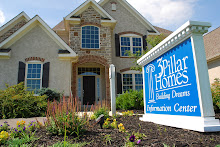After the structural framing stage and the installation of the preliminary -- or "rough" -- plumbing, electrical, and heating and cooling components are complete, there is a no-name phase of construction we'll call the "prefinishes."
The reason this stage of the process has no common name is because several different activities -- by several different trades -- occur during this time. All of them combine to prepare the house for the finish products to come, from flooring to trim to lighting, and are vital in the overall performance of the house. Indeed, the sum of these prefinishes is called the "thermal envelope." These critical steps include:
Housewrap. Also called an air or vapor barrier, this tough, woven sheet-like material is installed on the exterior walls around the entire house. Sections are fastened and taped together to keep water and air outside the structural frame. Housewrap protects the "thermal envelope," improving the home's energy efficiency and indoor comfort. The wrap covers the rough openings of the windows and doors. Once it is installed, we carefully cut out those openings and fold the material around the rough openings to ensure complete protection from the elements.
Windows and doors. Once the housewrap has been cut to expose the rough frame openings, we carefully install each window and door. Attention to detail is critical at this stage to make sure that the windows and doors not only operate smoothly and properly, but also deliver maximum thermal benefits. Good quality windows and glass patio doors are now designed for improved control of thermal transfer, solar heat gain, and harmful ultraviolet rays.
A home's main entry door is often a signature feature of the house. Depending on the home's design, the entry door might include windows on one or both sides (sidelights) or over the top of the door (transom), or perhaps even a glass insert in the door itself. These design elements add character to a home's design and heighten curb appeal.
At this stage, we install the garage door(s). Like windows and passage doors, garage doors have come a long way in their design options and insulating value.
Insulation. Insulation is typically installed in the exposed framing cavities of the exterior walls. Good quality insulation retards the transfer of warm and cold air through the home's structure. Insulation makes the home more energy efficient and comfortable inside.
Different insulation products are sometimes used for different sections of the house. In the walls, for instance, formed batts of fiberglass insulation are designed to fit snugly between the studs. In the attic, a loose-fill (or "blown") insulation is often more appropriate to pack the spaces between the roof framing. An expanding, spray-applied foam might be most appropriate in the slight gaps between the window and door frames and their rough openings to seal the house more completely against air infiltration and thermal transfer.
Drywall. The last of the "prefinishes" is drywall, or gypsum wallboard panels. These familiar panels are cut to fit and fastened to the framed walls and ceiling, creating a smooth surface and substrate for paint, paneling, wallpaper, and other finishes. (The floors have a wood substrate called "subflooring," which is installed during the framing stage of construction.)
Because whole and cut sections of drywall panels are pieced together, the seams between the sections must be filled and smoothed before the wall or ceiling finishes are applied. Taping the drywall joints is a process that requires several days, as multiple layers of "mud" are applied and sanded to deliver a smooth and uninterrupted substrate with no visible joints between the panels.
The completion of the "prefinish" stage creates the home's thermal envelope, fully protecting it and its occupants from the elements and from thermal transfer through the exterior walls and openings.
skip to main |
skip to sidebar
We are a new home builder offering custom home plans to meet your lifestyle and budget. Whether you are in the market for a new, semi custom or custom home, we can help you achieve your dream.
3 Pillar Homes
5710 Delano Ave
Lewis Center, OH 43035
(740) 548-8599




